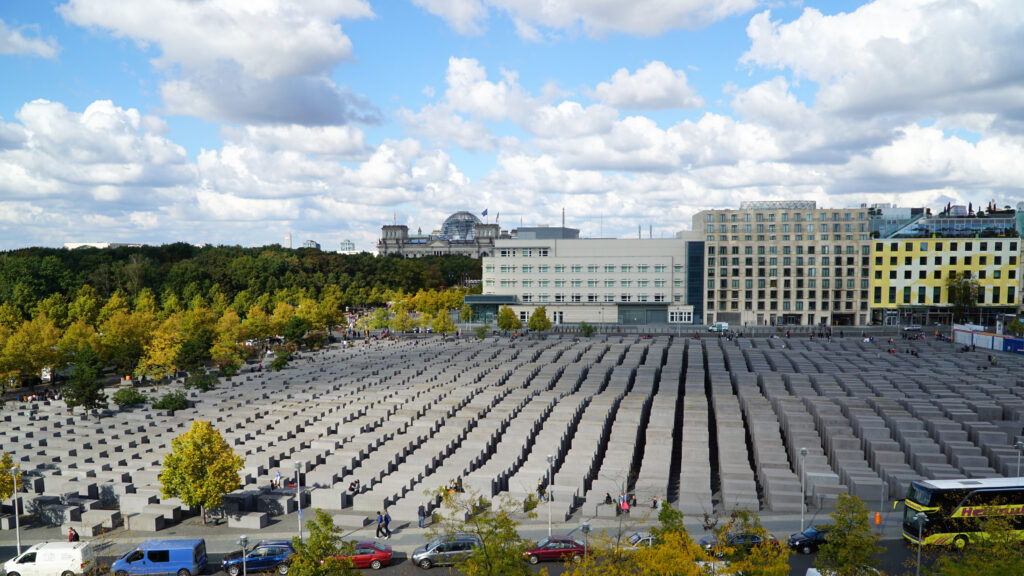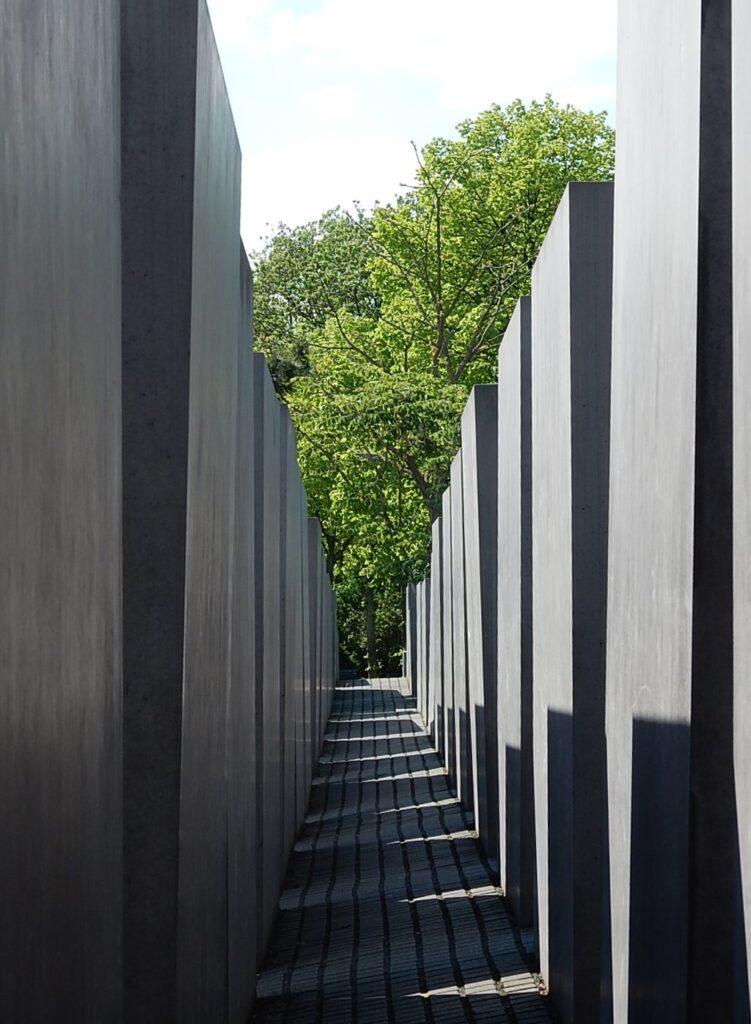Monuments and Memory — From Collective to Personal Remembrance

Summary
This Open Toolkit invites learners to explore how memory is expressed, shaped, and negotiated in public space.
Through observing global examples, reflecting on local sites of memory, and creating a personal form of remembrance, learners discover how memory can be monumental, intimate, communal, or symbolic.
The Toolkit is designed to be accessible, inclusive, and fully self-directed, with no prior art knowledge required.
🔹 Learning Aims
• Understand how memory is expressed and shaped in public space
• Develop visual & emotional literacy
• Reflect on personal and collective remembrance
• Recognise both monumental & intimate forms
• Create a personal remembrance work
• Self-evaluate through reflection prompts
🔹Preparation
• Paper (or a notebook)
• Any pen or pencil
• Optional: coloured pens, markers, or small objects for sketching or annotating
• A quiet place where you can focus for 20 minutes
🔹 How to Use This Toolkit
Follow each step in order:
Global →Local → Personal → Share
⏱ Time: about 20 minutes
💡 No prior knowledge is needed — just curiosity and reflection.
🌍Unit 1: Global Perspective(5 minutes)
Choose Your Way to Enter
Before exploring the monuments below, choose ONE of the following three entry points. There is no right or wrong choice—each offers a different way of experiencing a monument.
1. LOOK
Focus on shapes, materials, space, and atmosphere.
Pay attention to scale, shadow, distance, and texture.
What emotion do you feel?
2. READ (Optional)
Read the short 1–2 sentence context provided under each image.
You may skip this if you prefer a purely visual experience.
3. WONDER
Ask one question about the monument.
It can be emotional, formal, personal, or speculative.
For Example:
• Why might this monument take this shape?
• How would it feel to walk inside it?
• Who is this monument speaking to?
👀Look global memorials below

Vietnam Veterans Memorial, Washington D.C. public domain

Vietnam Veterans Memorial, Washington D.C. (CC BY 2.0)
Vietnam Veterans Memorial(Maya Lin, 1982)
Built to commemorate the soldiers who died or went missing during the Vietnam War.

By Alexander Blum – Own work, CC BY-SA 4.0, https://commons.wikimedia.org/w/index.php?curid=56502968

By Michael Coghlan from Adelaide, Australia – After All There’s Hope, CC BY-SA 2.0, https://commons.wikimedia.org/w/index.php?curid=58864453
Memorial to the Murdered Jews of Europe(Peter Eisenman, 2005)
Created to honour the Jewish victims of the Holocaust.

By Tadahiko Hayashi ISBN 4-00-008365-1, Public Domain, https://commons.wikimedia.org/w/index.php?curid=145060422
Hachikō Statue(Teru Andō,1934)
A public statue commemorating Hachikō, the loyal dog who waited for his owner every day at Shibuya Station.
Thinking…
– What forms of memory did you observe—personal, collective, historical, or emotional?
– What design choices make them powerful or moving?
– What does “remembering” feel like when experienced through a monument?
✍️ Take 5 minutes to note your thoughts.
🏙️Unit 2: Local Perspective(5 minutes)
🤔Think of a memorial from your own home
Choose one public artwork or monument from your local area that commemorates a
person,
event,
tradition,
or shared memory.
(This doesn’t need to be something grand — it can be a small statue, a cultural figure, a memorial stone, or even a local landmark that carries shared meaning.)
In your hometown, a monument may be:
• a bench dedicated to someone
• a tree planted for remembrance
• a mural, a sign, or a corner where people leave flowers
• a temporary shrine
• a community-made marker
• a place associated with memory or loss
Example

By saw2th – https://www.flickr.com/photos/saw2th/5565045193/, CC BY-SA 2.0, https://commons.wikimedia.org/w/index.php?curid=115814370
Angel of the North (Antony Gormley, 1998)
Standing 20 metres tall with a 54-metre wingspan, the Angel of the North is one of the UK’s most recognisable public sculptures.Made of weathering steel, the figure overlooks the town of Gateshead and symbolises welcome, resilience, and the region’s transition from its industrial past.It is widely regarded as a marker of collective identity and regional pride.
Thinking…
—What does your local memorial commemorate?
—Who or what is remembered?
—How does the artwork express memory (through shape, material, location, or symbolism)?
—What emotions or memories does it evoke for you personally?
Optional: Use a map to jog your memory
If you are unsure where to begin, you may open Google Maps (or another map app) and explore your hometown visually.
Sometimes a street name, a park, a square, or even a forgotten corner can help trigger memories of places that hold meaning.
https://www.google.com/maps
📝Record your thoughts, find pictures and information about it, and share it with people around you.
💙Unit 3: Create Your Own Personal Monument(10 minutes)
In this final section, you will design a small personal monument based on a memory, experience, person, tradition, or value that matters to you.Your monument does not need to be large, serious, or perfect.
It can be simple, symbolic, playful, or deeply personal — anything that expresses what you want to remember.
Your should:
🧑🎨Create your own “personal monument” using drawing, writing, collage, or any form you prefer.
Before you begin, remember:
Your monument does not need to be physical or monumental.
It can be:
• a small object
• a word
• a gesture
• a symbol
• a place
• or a personal story
Anything can become a monument when you give meaning to it.
Guiding questions to help you create:
—What memory or moment do you want to honour?
—Why is it meaningful to you?
— What form feels right for expressing this memory? (shape, color, texture, location, symbol…)
—If someone else saw your monument, what feeling would you want them to have?
—How does creating this monument help you reflect on your own identity or experiences?
After you finish:
You may choose to keep your creation private, or you can share it anonymously on a Miro if available.
Monuments and Memory — From Collective to Personal Remembrance © 2025 by Nan Wu is licensed under CC BY 4.0
(By National Park Service https://www.flickr.com/photos/42600860@N02/51971811478/, CC BY 2.0, https://commons.wikimedia.org/w/index.php?curid=122692166)


